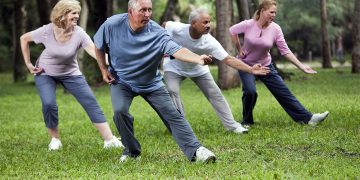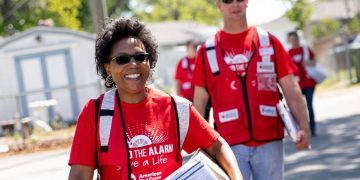Communities play a critical role in shaping the well-being of their members. The environment in which we live can have a profound impact on both our physical and mental health. Access to resources such as healthcare, green spaces, fitness facilities, social connections, and mental health services are all essential elements that contribute to a community’s overall health. But how can you assess whether your community is offering sufficient support to promote the health of its residents?
In this article, we will explore the various factors that influence community health and provide insights on how to evaluate whether your community is fostering a healthy environment. We will also look at some potential ways communities can better support residents to create a more health-conscious and thriving environment.
1. Access to Healthcare Services
The availability of healthcare services is one of the primary indicators of a community’s commitment to health. A healthy community must have easy access to medical care, including routine checkups, emergency services, and specialized treatment.
A. General Healthcare Access
A community that promotes health should have accessible clinics, hospitals, and general healthcare practitioners, such as family doctors, dentists, and specialists. The frequency with which people can see a doctor without facing significant barriers—such as long wait times or distance—directly impacts overall community health.
- How it helps: Easy access to healthcare services allows residents to manage chronic conditions, prevent illness, and receive timely treatment for health issues. Communities with robust healthcare infrastructures tend to have healthier populations, as people are more likely to get checkups and treatment when needed.
B. Mental Health Services
Mental health is just as important as physical health. Communities that provide adequate mental health support—such as counseling centers, therapists, and helplines—help reduce stigma surrounding mental health and encourage people to seek help when needed.
- How it helps: The presence of mental health services in a community can prevent residents from suffering in silence. Mental well-being is crucial for leading a fulfilling life, and access to professional support is key to preventing mental health crises, reducing stress, and improving overall quality of life.
C. Preventive Healthcare Programs
A community that encourages preventive healthcare practices is a community that cares for its residents’ long-term health. Programs that focus on vaccination, health screenings, nutritional education, and exercise can help prevent chronic diseases and reduce healthcare costs in the long run.
- How it helps: By offering resources for preventive care, communities can reduce the overall burden of diseases such as heart disease, diabetes, and cancer. Education campaigns about nutrition, exercise, and early detection of health conditions empower residents to take control of their health before problems arise.
2. Availability of Physical Activity Opportunities
Physical activity is essential to maintaining good health. Communities that provide ample opportunities for exercise, such as gyms, parks, walking trails, and recreational centers, make it easier for their residents to stay active and healthy.
A. Green Spaces and Outdoor Activities
Access to parks, nature reserves, and public spaces is an important aspect of a healthy community. Green spaces provide residents with opportunities to walk, jog, bike, or simply relax and enjoy nature. These spaces not only promote physical health but also have a calming, stress-relieving effect on mental well-being.
- How it helps: Natural environments promote exercise, outdoor socialization, and relaxation, all of which are essential for maintaining a healthy mind and body. Communities with ample green space encourage an active lifestyle and offer residents a refuge from the pressures of daily life.
B. Fitness Facilities and Recreation Centers
Public recreation centers, sports leagues, and fitness facilities are critical resources for encouraging physical activity. These facilities provide safe, convenient spaces for residents to engage in a variety of exercise options, including swimming, weightlifting, yoga, and team sports.
- How it helps: Fitness centers provide people of all ages and abilities with opportunities for exercise and social interaction. These spaces help promote community engagement, build relationships, and encourage regular physical activity, leading to improved health outcomes for everyone.
C. Accessible Walking and Cycling Infrastructure
Walking and cycling infrastructure—such as bike lanes, walking paths, and pedestrian-friendly streets—makes it easier for residents to incorporate physical activity into their daily routines. When people can walk or bike safely, they are more likely to be physically active, reducing their risk for chronic diseases such as obesity, heart disease, and diabetes.
- How it helps: Accessible walking and cycling paths encourage people to walk or cycle instead of driving. These activities help improve cardiovascular health, boost mood, and contribute to environmental sustainability by reducing car traffic.
3. Mental Health and Social Support Networks
A healthy community should foster emotional well-being by encouraging social support networks and providing mental health resources. Social connections play a major role in reducing stress and improving overall mental health, while mental health support can help individuals cope with the challenges of daily life.
A. Social Clubs and Support Groups
Community centers and organizations that offer social clubs, support groups, or hobby classes allow residents to connect with others, form friendships, and provide mutual support. Social interaction is essential for reducing feelings of isolation, loneliness, and stress, all of which can negatively impact mental health.
- How it helps: Social support networks give individuals a sense of belonging, provide emotional support during tough times, and contribute to overall life satisfaction. Regular socializing is also known to reduce symptoms of depression and anxiety, making a community more resilient in the face of challenges.
B. Community-Based Mental Health Resources
Mental health services that are accessible within the community—such as therapy centers, peer support groups, and hotlines—ensure that residents who need help are able to get it without facing barriers like long waiting times or high costs.
- How it helps: Accessible mental health resources help reduce the stigma surrounding mental illness and make it easier for people to seek professional help when needed. These services promote early intervention and provide long-term support for individuals dealing with mental health issues.
C. Family and Child Support Services
For families, access to childcare, parenting resources, and family counseling can help reduce stress and improve overall family well-being. When families are supported, children benefit from healthier, happier environments, and parents can manage the demands of work and home life more effectively.
- How it helps: Family support services reduce the burden on parents and caregivers, allowing them to thrive while ensuring children have the resources they need to grow into healthy, well-adjusted individuals. These services help alleviate the stress of juggling multiple roles and responsibilities.
4. Access to Healthy Food Options
Nutrition plays a key role in both physical and mental health. A community that offers access to fresh, affordable, and nutritious food is one that supports the well-being of its residents.
A. Farmers’ Markets and Healthy Food Access
Farmers’ markets, grocery stores with fresh produce, and community-supported agriculture programs make it easier for residents to access healthy food. A strong food system that prioritizes fresh, local, and nutrient-dense foods can have a significant impact on public health by reducing the risk of diet-related diseases like obesity and diabetes.
- How it helps: When healthy food options are easily accessible, people are more likely to make nutritious food choices, which leads to better overall health. Communities with strong food access programs also help reduce food insecurity, ensuring that everyone has access to nourishing meals.
B. Nutrition Education Programs
Providing educational programs on nutrition, cooking, and meal planning helps residents make informed decisions about their diets. Communities that offer these programs empower residents to take charge of their health through better food choices.
- How it helps: Education on healthy eating empowers individuals to make better food choices and adopt healthier habits. Informed residents are less likely to develop chronic diseases related to poor nutrition and are better equipped to manage their overall health.

5. Community Engagement and Healthy Lifestyle Programs
The more a community encourages residents to get involved in health-promoting activities, the more successful it will be in fostering a culture of health and well-being.
A. Public Health Campaigns
Public health campaigns aimed at increasing awareness about issues such as smoking cessation, substance abuse prevention, and vaccination are important for promoting healthy behaviors across the community. By providing information and resources, these campaigns help people make healthier choices.
- How it helps: Public health initiatives reduce the prevalence of preventable diseases and promote behaviors that protect long-term health. Community-wide health campaigns help raise awareness, provide support, and encourage healthy habits, benefiting everyone.
B. Community Wellness Events
Community wellness events, such as health fairs, fitness challenges, or mental health awareness programs, encourage residents to take an active role in their health. These events offer opportunities to learn, exercise, and meet others who are focused on living a healthy lifestyle.
- How it helps: Wellness events bring the community together and create a shared sense of responsibility for health. They also provide resources and support for individuals looking to improve their well-being, helping to foster a healthier, more connected community.
Conclusion: How Well Is Your Community Supporting Your Health?
A healthy community is one that actively promotes physical, mental, and emotional well-being for all its residents. From access to healthcare services to providing green spaces, healthy food options, and social support, a community can play a significant role in fostering health.
If your community offers adequate support in these areas, you are likely benefiting from an environment that supports your overall health. However, if there are gaps in these areas, it may be time to advocate for improvements that can better support the well-being of everyone. Communities that prioritize health are not only more resilient but also more vibrant and thriving.

















































